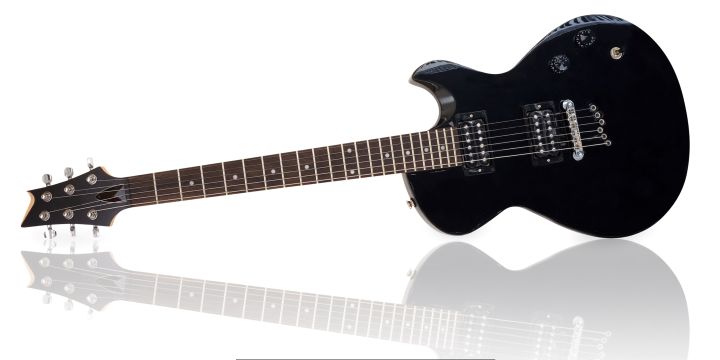Electric guitar pickups are essential components that convert the vibrations of the guitar strings into electrical signals, which can then be amplified to produce sound. At their core, pickups consist of magnets and coils of wire. When a string vibrates above a pickup, it disturbs the magnetic field created by the magnets, inducing an electrical current in the coil.
This process is fundamental to the electric guitar’s operation, and understanding it is crucial for any guitarist looking to troubleshoot issues related to sound quality or performance. There are two primary types of pickups: single-coil and humbucker. Single-coil pickups are known for their bright, clear tone but can be susceptible to interference and noise.
In contrast, humbuckers are designed to cancel out electromagnetic interference, resulting in a thicker, warmer sound. Each type has its unique characteristics and applications, making it important for guitarists to choose the right pickup for their musical style. Familiarity with these basics allows musicians to better understand how their instrument works and what might go wrong when issues arise.
Key Takeaways
- Electric guitar pickups are essential components that convert string vibrations into electrical signals.
- Common signs of a faulty pickup include low output, buzzing or humming sounds, and uneven volume across strings.
- Loose wiring and connections can cause pickup issues and should be checked regularly for proper functioning.
- Testing the pickup with a multimeter can help identify any electrical issues such as open or short circuits.
- Potentiometers and switches should be evaluated for proper functionality and replaced if necessary to ensure optimal pickup performance.
- Physical damage to the pickup, such as cracks or breaks, can significantly affect its performance and should be inspected regularly.
- Grounding issues can cause unwanted noise and interference and should be troubleshooted to ensure proper functioning of the pickup.
- Seeking professional help may be necessary if troubleshooting and basic repairs do not resolve pickup issues.
Identifying Common Signs of a Faulty Pickup
Volume and Sound Issues
One of the most common indicators is a noticeable drop in volume or a complete lack of sound from one or more pickups. This can manifest as an inconsistent output when playing, leading to frustration during practice or performance.
Unusual Noises and Tone Quality
Additionally, if a pickup produces an unusual buzzing or humming noise, it may signal a problem that needs immediate attention. Another sign of a faulty pickup is a change in tone quality. If a guitarist notices that their sound has become dull or muddy, it could indicate that the pickup is malfunctioning.
Impact on Performance and Resolution
This degradation in tone can affect the overall performance and enjoyment of playing the instrument. By being aware of these symptoms, guitarists can take proactive steps to diagnose and resolve issues before they escalate into more significant problems.
Checking for Loose Wiring and Connections
One of the most common culprits behind pickup issues is loose wiring or connections. Over time, the vibrations from playing can cause solder joints to weaken or wires to become disconnected. To check for these issues, a guitarist should carefully inspect the wiring inside the guitar’s control cavity.
This involves removing the back cover or pickguard to gain access to the internal components. A visual inspection can often reveal loose wires or broken connections that may be causing problems. In addition to visual checks, gently tugging on wires can help identify any loose connections that may not be immediately visible.
If any wires feel loose or disconnected, they should be re-soldered or secured properly. Ensuring that all connections are tight and secure can often resolve issues related to sound quality and performance, making this step crucial in troubleshooting pickup problems.
Testing the Pickup with a Multimeter
| Test | Result |
|---|---|
| Resistance Test | 10 ohms |
| Continuity Test | Good |
| AC Voltage Test | 5V |
Using a multimeter is an effective way to diagnose pickup issues more accurately. This tool measures electrical resistance and can help determine whether a pickup is functioning correctly. To begin testing, a guitarist should set the multimeter to measure resistance (ohms) and connect the probes to the pickup’s output wires.
A healthy pickup typically shows a specific resistance value, which varies depending on the type of pickup being tested. If the multimeter indicates an open circuit (infinite resistance), it suggests that there is a break in the coil windings or a disconnection somewhere in the wiring. Conversely, if the resistance reading is significantly lower than expected, it may indicate a short circuit within the pickup itself.
By interpreting these readings, guitarists can gain valuable insights into the condition of their pickups and take appropriate action based on their findings.
Evaluating the Potentiometers and Switches
In addition to examining pickups themselves, evaluating potentiometers (volume and tone controls) and switches is essential for diagnosing sound issues in an electric guitar. These components play a critical role in shaping the overall tone and volume of the instrument. If a guitarist experiences problems such as crackling sounds when adjusting knobs or inconsistent volume levels, it may indicate that these components are faulty.
To assess potentiometers and switches, one can perform a visual inspection for any signs of damage or corrosion. Additionally, using a multimeter can help measure their resistance values and ensure they are functioning correctly. If any potentiometer shows erratic readings or fails to return to its original position after being adjusted, it may need replacement.
By ensuring that all electronic components are in good working order, guitarists can maintain optimal performance from their instruments.
Inspecting the Pickup for Physical Damage
Visible Signs of Damage
A thorough inspection of each pickup should be conducted to identify any visible signs of wear or damage. This includes checking for cracks in the casing, broken magnets, or any other physical deformities that could impact functionality.
Impact on Tone and Output
Even minor damage can lead to significant changes in tone and output. In some cases, pickups may become misaligned due to physical impacts or improper installation. Ensuring that pickups are correctly positioned relative to the strings is crucial for achieving optimal sound quality.
Repair and Replacement
If any physical damage is detected during inspection, it may be necessary to replace the affected pickup or seek professional repair services to restore functionality.
Troubleshooting Grounding Issues
Grounding issues are another common source of problems with electric guitar pickups. A poor ground connection can lead to unwanted noise, hum, or even complete loss of signal from one or more pickups. To troubleshoot grounding issues, a guitarist should first check all ground connections within the guitar’s wiring system.
This includes ensuring that ground wires are securely connected to both the pickups and the output jack. If grounding issues persist after checking connections, it may be helpful to test for continuity using a multimeter. By measuring resistance between various points in the grounding circuit, one can identify any breaks or weak connections that may be causing problems.
Addressing grounding issues promptly is essential for maintaining a clean signal and preventing unwanted noise during play.
Seeking Professional Help if Necessary
While many guitarists may feel comfortable troubleshooting their instruments on their own, there are times when seeking professional help becomes necessary. If extensive testing reveals complex issues beyond basic wiring problems or if physical damage is suspected but not easily identifiable, consulting with a qualified technician is advisable. Professional luthiers possess specialized knowledge and tools that can diagnose and repair intricate problems effectively.
Additionally, if a guitarist lacks experience with electronics or feels uncertain about performing repairs themselves, enlisting professional assistance can save time and prevent further damage to the instrument. Ultimately, ensuring that an electric guitar functions optimally is crucial for any musician’s performance and enjoyment, making it worthwhile to seek expert help when needed. In conclusion, understanding electric guitar pickups and their associated components is vital for any guitarist looking to maintain their instrument’s performance.
By recognizing common signs of faulty pickups, checking wiring connections, testing with a multimeter, evaluating potentiometers and switches, inspecting for physical damage, troubleshooting grounding issues, and knowing when to seek professional help, musicians can ensure their guitars remain in top condition for years to come.
If you are experiencing issues with a faulty pickup on your electric guitar, it may be helpful to check out this article on how social media is shaping the careers of new artists. Just like musicians use social media to promote their work and connect with fans, you can use online resources to troubleshoot and fix your guitar’s pickup problem. By leveraging the power of the internet, you may be able to find solutions to your guitar issues and get back to playing your favorite tunes in no time.
FAQs
What is a pickup in an electric guitar?
A pickup is a device that captures the vibrations of the guitar strings and converts them into electrical signals, which are then sent to an amplifier.
What are the signs of a faulty pickup in an electric guitar?
Signs of a faulty pickup in an electric guitar may include low output, buzzing or humming sounds, intermittent signal loss, or complete signal loss.
What causes a pickup to become faulty in an electric guitar?
A pickup in an electric guitar can become faulty due to a variety of reasons, including wiring issues, physical damage, corrosion, or electronic component failure.
How can a faulty pickup in an electric guitar be fixed?
Fixing a faulty pickup in an electric guitar may involve troubleshooting the wiring, replacing damaged components, or seeking professional repair or replacement of the pickup.
Can a faulty pickup in an electric guitar be prevented?
To prevent a pickup from becoming faulty in an electric guitar, it is important to handle the guitar with care, regularly inspect and maintain the wiring and components, and avoid exposing the guitar to extreme conditions.





